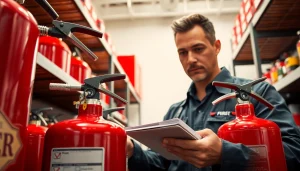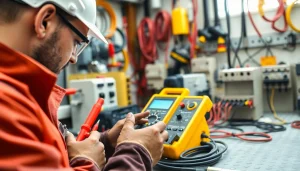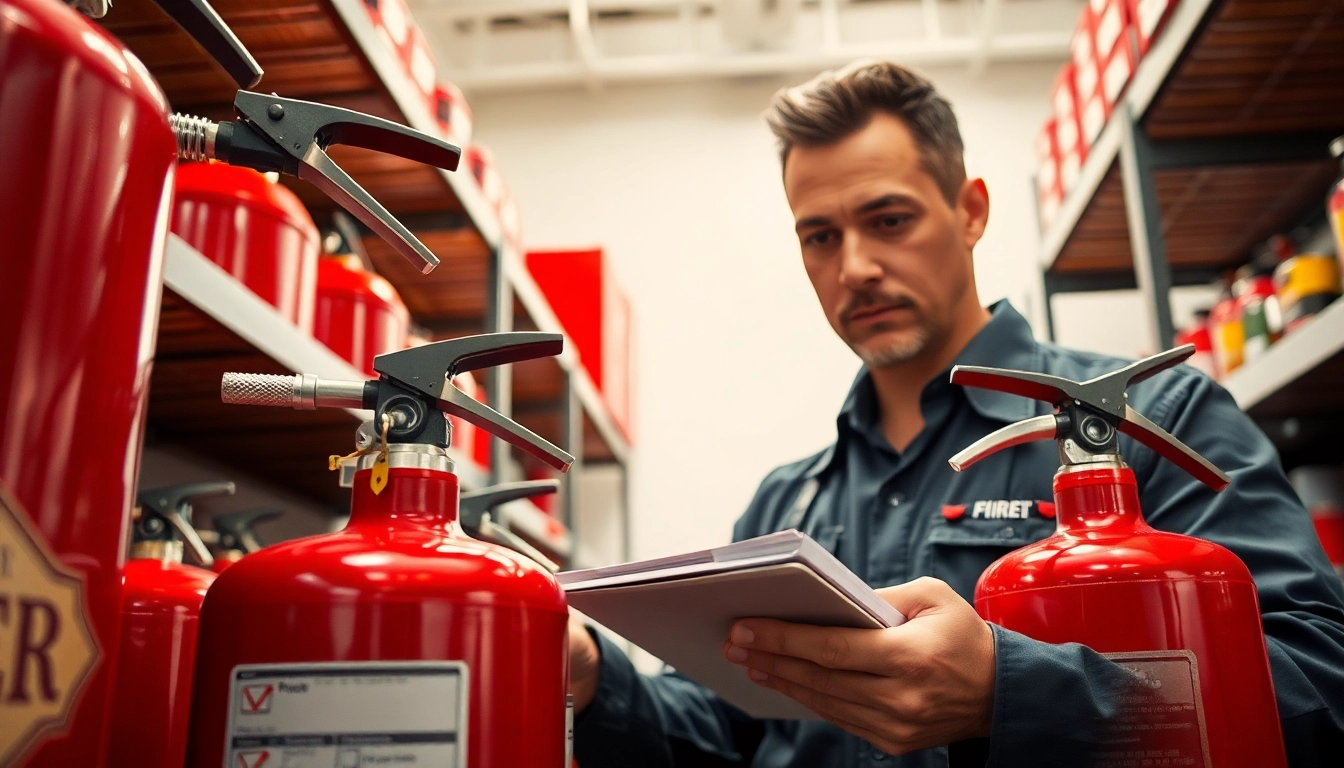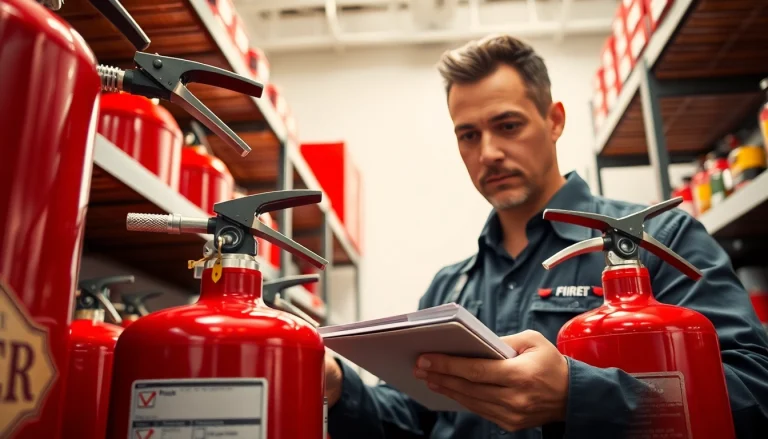Understanding Fire Extinguisher Checks
Fire extinguishers are essential safety devices designed to combat small fires before they escalate into larger, more dangerous situations. Regular fire extinguisher checks are crucial to ensure their effectiveness when the need arises. In this article, we will explore what fire extinguisher checks entail, their importance, legal requirements, and best practices for conducting these checks efficiently.
What Are Fire Extinguisher Checks?
Fire extinguisher checks are systematic evaluations performed to ensure that fire extinguishers are functional and ready for use. The checks typically include a visual inspection of the extinguisher’s condition, verifying that it’s accessible, and confirming that it has not expired. Inspections can be conducted monthly and more comprehensive checks annually to ensure compliance with safety regulations and to keep the equipment in optimal condition.
Importance of Regular Inspections
The importance of regular fire extinguisher checks cannot be overstated. These checks not only ensure that the equipment is operational but also enhance overall fire safety within a space. Regular inspections can help:
- Identify any physical damages, like dents and rust.
- Ensure that extinguishers are in accessible locations.
- Confirm that pressure gauges read within operational limits.
- Guarantee that inspection tags are up to date, reflecting the last check date.
- Comply with local, state, and federal fire safety regulations.
Legal Requirements for Fire Extinguisher Checks
Various regulations govern fire extinguisher inspections to ensure public safety. For instance, the National Fire Protection Association (NFPA) outlines specific requirements in NFPA 10, which mandates:
- Initial inspection upon installation of the extinguisher.
- Monthly visual checks to assess the extinguisher’s condition.
- Annual maintenance checks conducted by a licensed professional.
It’s essential for businesses and property owners to familiarize themselves with local fire codes, as they may impose additional obligations regarding the frequency and type of inspections required.
How to Perform Fire Extinguisher Checks
Monthly Visual Inspection Steps
A visual inspection of fire extinguishers is a straightforward yet critical series of steps. Here’s how to conduct an effective monthly inspection:
- Check Accessibility: Ensure the extinguisher is easily accessible and not blocked by other objects.
- Physical Condition: Examine the extinguisher for any signs of damage, such as dents, rust, or leaks.
- Pressure Gauge: Verify the gauge reading is within the green zone, indicating proper pressure.
- Inspection Tag: Confirm that the inspection tag is present and up-to-date.
- Identify Expiration: Check the manufacture date and ensure the extinguisher is within its service life.
Annual Maintenance Guidelines
In addition to monthly visual inspections, annual maintenance by a qualified professional is necessary. This should include:
- Comprehensive testing of the extinguisher’s functionality.
- Hydrostatic testing every 5 to 12 years, depending on the type of extinguisher.
- Replacement of any components that are damaged or past their service life.
- Comprehensive documentation of the inspection and maintenance performed.
Documentation Needed for Fire Extinguisher Checks
Keeping accurate records of all inspections and maintenance processes is crucial. Documentation should typically include:
- Date of inspection.
- Inspector’s name and credentials.
- Condition of the extinguisher.
- Any actions taken, such as repairs or replacements.
Proper documentation not only aids future inspections but also serves as proof of compliance with fire safety regulations.
Common Issues Found During Fire Extinguisher Checks
Signs of Wear and Tear
During inspections, several common issues may be identified. These include:
- Physical Wear: Dents, cracks, and rust can significantly undermine the effectiveness of a fire extinguisher.
- Missing Parts: Components like hoses or nozzles may be missing or damaged, rendering the extinguisher useless.
- Obstruction: Items may block access to extinguishers, impeding quick use during an emergency.
Addressing these issues promptly is vital to ensure the extinguisher remains operational.
Identifying Pressure Problems
The pressure gauge is one of the most critical components of a fire extinguisher. Indicators of pressure problems include:
- Gauge in the red zone, indicating low pressure.
- Displacement of the gauge needle due to a malfunction.
Low pressure can occur due to leaks or component failure, both of which necessitate urgent attention to avoid failure during a fire event.
Corrosion and Other Physical Damage
Corrosion can severely compromise the integrity of a fire extinguisher, leading to catastrophic failure. Common signs of corrosion include:
- Rust on the exterior casing.
- Corrosion around the nozzle or connection points.
Regular checks can help detect these issues early, preventing potential equipment failures.
Best Practices for Fire Extinguisher Maintenance
Creating a Fire Safety Plan
Having a well-structured fire safety plan is paramount for any organization. Elements of an effective fire safety plan include:
- Designated emergency exit routes.
- Regular fire drills for staff and occupants.
- Clearly marked locations of fire extinguishers.
This plan should be reviewed and updated regularly to accommodate any changes in the building layout or occupancy.
Incorporating Regular Training
Training employees on how to use fire extinguishers operates as both preventive and proactive measures. Regular training sessions can include:
- Instructions on identifying types of fires and using the appropriate extinguisher.
- Hands-on demonstrations of extinguishing small, controlled fires.
Competent use of fire extinguishers significantly increases safety and preparedness in emergency situations.
Using Technology to Monitor Fire Extinguisher Checks
Innovations in fire safety technology allow for enhanced monitoring of fire extinguisher checks. Some tools include:
- Smart extinguishers that provide alerts when maintenance is needed or if they are moved.
- Mobile applications for scheduling and keeping records of inspections.
Employing technology can simplify maintenance tracking and ensure compliance with safety standards.
When to Call a Professional for Fire Extinguisher Checks
Choosing a Qualified Fire Safety Service
Selecting the right professional for fire extinguisher inspections involves checking for qualifications, such as:
- Licensing and certifications in fire safety and equipment maintenance.
- Experience and references from past clients.
Professional inspections should provide additional peace of mind regarding the safety of your equipment.
Understanding the Costs of Professional Inspections
The costs associated with hiring professionals can vary based on several factors, including:
- Type and number of extinguishers.
- Location and accessibility of the extinguishers.
- Frequency of the inspections required.
Budgeting for these inspections as part of ongoing safety maintenance is an investment in fire safety and mitigation.
Evaluating Service Contracts and Compliance
Engaging in service contracts with a fire inspection company should be approached with care. Key points to consider include:
- Detailed scope of services offered under the contract.
- Compliance with local fire regulations and standards.
- Provision for record-keeping and documentation assurance.
Evaluating these aspects will help ensure that you receive comprehensive services that align with safety standards and regulatory obligations.




















+ There are no comments
Add yours